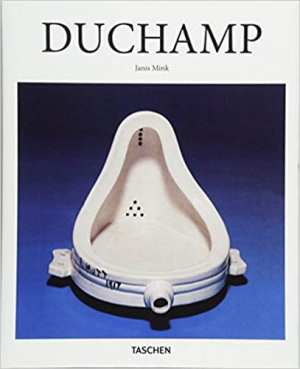Duchamp (Basic Art Series 2.0)
- Автор:
- by Janis Mink (Author)
- Видавництво:
- Taschen
- Категорія:
- Дизайн житлових інтер'єрів
- Мова:
- англійська
- Обкладинка:
- тверда
- ISBN:
- 9783836534321
- Рік видання:
- 2016
- Кількість сторінок:
- 96
700.00 грн.
Про книгу
Readymade man
Changing the course of 20th-century art
When is a urinal no longer a urinal? When Marcel Duchamp (1887–1968) declared it to be art. The uproar that greeted the French artist’s Fountain (1917), a porcelain urinal installed in a gallery, sent shock waves through the art world establishment that continue to reverberate to the present day.
Duchamp made a career out of challenging our notions of what art is and, in the process, opened our minds to hitherto unknown possibilities. After an oblique version of Cubism in his early career, the artist made his name with Nude Descending a Staircase (1912), a groundbreaking blend of abstraction, Cubism, and Futurism, with a controversially mechanical titular nude. Around the same time, Duchamp began his forays into the now-iconic “readymades” – seemingly random found objects which Duchamp would present as art, including Bicycle Wheel (1913), Bottle Rack (1914), and a snow shovel, labeled Prelude to a Broken Arm (1915).
Duchamp went on to cause even further apoplexy among traditionalists with outrages such as L.H.O.O.Q. (1919), in which he presented a cheap copy of da Vinci’s Mona Lisa with a mustache and beard penciled on and, for good measure, the auditory pun of the title (which, when read aloud in French, sounds like “Elle a chaud au cul” – “She has a hot ass”).
This book distills all the daring and the scandal of Duchamp”s art into one essential overview which introduces not only one pioneering creative but also a critical moment in Western art. It is here, amid the assaults on Old Masters and the fractured poetry of found objects, that the art world first transitioned from “retinal” experiences to what would evolve into conceptual practice.



